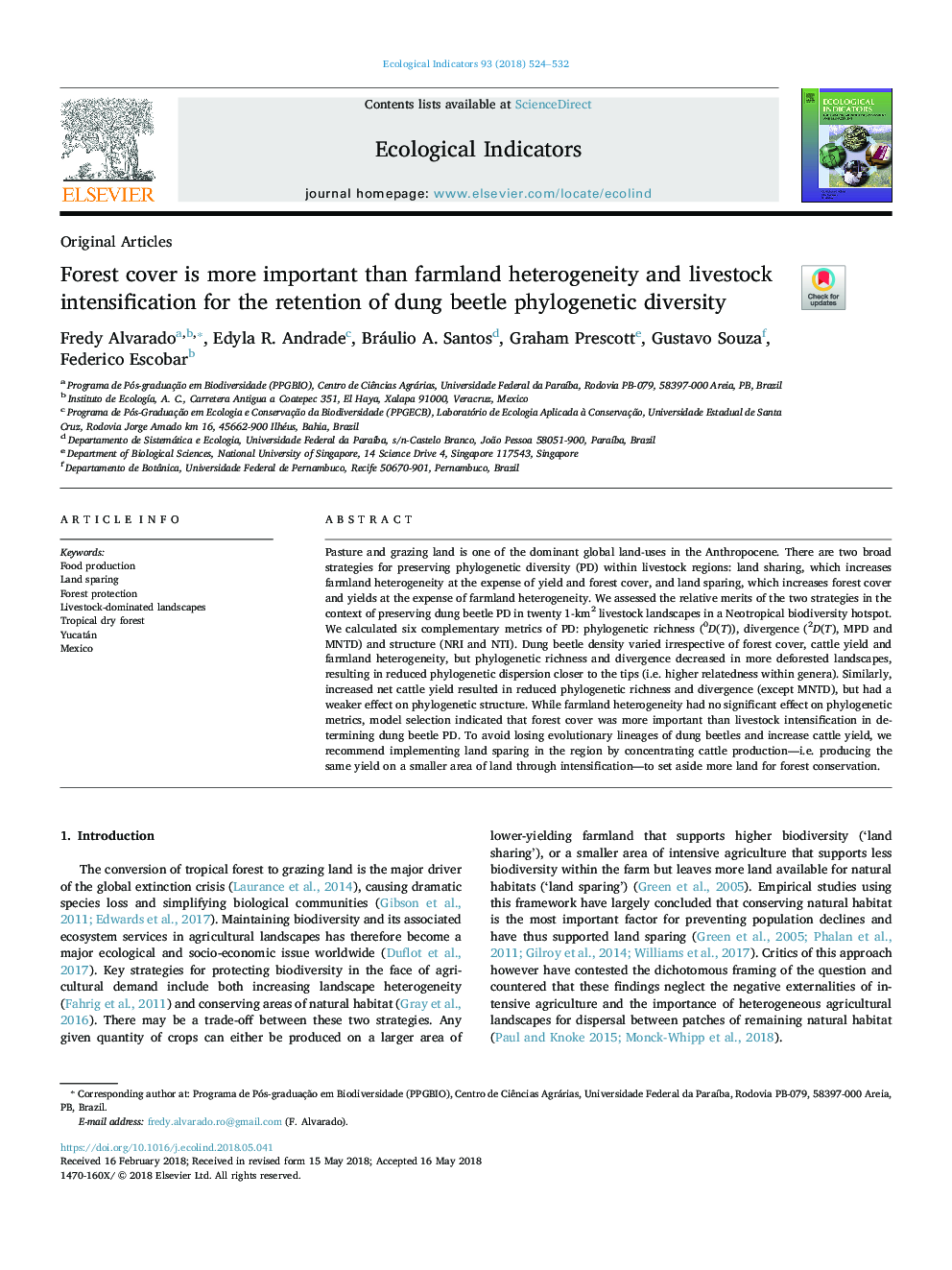| Article ID | Journal | Published Year | Pages | File Type |
|---|---|---|---|---|
| 8845171 | Ecological Indicators | 2018 | 9 Pages |
Abstract
Pasture and grazing land is one of the dominant global land-uses in the Anthropocene. There are two broad strategies for preserving phylogenetic diversity (PD) within livestock regions: land sharing, which increases farmland heterogeneity at the expense of yield and forest cover, and land sparing, which increases forest cover and yields at the expense of farmland heterogeneity. We assessed the relative merits of the two strategies in the context of preserving dung beetle PD in twenty 1-km2 livestock landscapes in a Neotropical biodiversity hotspot. We calculated six complementary metrics of PD: phylogenetic richness (0D(T)), divergence (2D(T), MPD and MNTD) and structure (NRI and NTI). Dung beetle density varied irrespective of forest cover, cattle yield and farmland heterogeneity, but phylogenetic richness and divergence decreased in more deforested landscapes, resulting in reduced phylogenetic dispersion closer to the tips (i.e. higher relatedness within genera). Similarly, increased net cattle yield resulted in reduced phylogenetic richness and divergence (except MNTD), but had a weaker effect on phylogenetic structure. While farmland heterogeneity had no significant effect on phylogenetic metrics, model selection indicated that forest cover was more important than livestock intensification in determining dung beetle PD. To avoid losing evolutionary lineages of dung beetles and increase cattle yield, we recommend implementing land sparing in the region by concentrating cattle production-i.e. producing the same yield on a smaller area of land through intensification-to set aside more land for forest conservation.
Related Topics
Life Sciences
Agricultural and Biological Sciences
Ecology, Evolution, Behavior and Systematics
Authors
Fredy Alvarado, Edyla R. Andrade, Bráulio A. Santos, Graham Prescott, Gustavo Souza, Federico Escobar,
